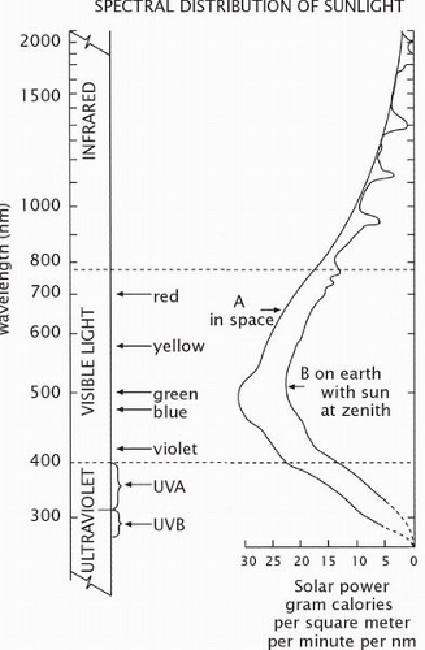Travel Reference
In-Depth Information
diation, which has wavelengths less than 400 nanometers (nm) (1 centimeter = 10
7
nano-
meters = 10
8
angstroms). Ultraviolet (UV) radiation is divided into UVA, which has a
wavelength of 315 to 400 nm, and UVB, which has a wavelength of 280 to 315 nm. For
many years only UVB was considered harmful, but that is now known to be incorrect.
Even when a person is shielded from the direct rays of the sun, much ultraviolet radi-
ationcanstillreachhimduetoatmosphericscatteringThisatmosphericradiationmaycon-
tribute half of the total ultraviolet radiation and tends to be greater when high, thin cirrus
cloudsarepresent.Indeed,total ultraviolet radiation canbegreater onanovercast daythan
on a cloudless day. Such radiation is particularly insidious because it is so unapparent.
Figure 27-1. Quantity of light of different wavelengths in sunlight

Search WWH ::

Custom Search